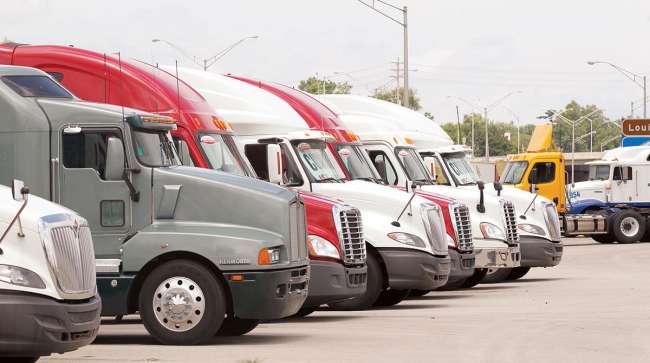Senior Reporter
Sales, Prices Rise in Used Class 8 Market in January

Sales of used Class 8 trucks rose in January as mileage and age fell, and the price of the average vehicle was stable compared with a year earlier, ACT Research Co. reported.
Sales jumped 4.5% to 23,100 compared with 22,100 a year earlier, according to ACT, based on its sample of dealers, wholesalers and auctioneers as well as a few large fleets.
The average price inched up to $43,100 from $42,135 a year earlier.
Mileage fell to 434,100 compared with 449,600 in the 2016 period.

Visser
The average age of six years, seven months declined by five months year-over-year.
Meanwhile, an oversupply of late-model aerodynamic Class 8 sleepers continues.
“All of the dealers I talk to make that comment,” ACT Vice President Steve Tam said. “And I don’t know how we fix that. That’s the largest segment on the new truck side, and we continue to pound them out.”
He added, “Maybe when we get to our expected slowdown in the 2020 timeframe we’ll get things righted, fingers crossed.”
The average sleeper sold in January was 7 years, two months old, had 458,697 miles and brought $51,254, said Chris Visser, senior analyst for the American Truck Dealers/NADA Official Commercial Truck Guide.
That compared with January 2017 when the average sleeper was two months newer, had 6,936, or 1.5%, more miles and brought $3,905, or 8.2% more money.
“We predict mildly to moderately stronger used truck volume in 2018, as customers become more confident about the economy,” Visser wrote in his latest report.
Rush Enterprises, the nation’s only publicly traded truck dealership, continues to monitor the number of used trucks entering the market and believes its inventory is “positioned appropriately,” W.M.”Rusty” Rush, chairman and CEO, said Feb. 15 during an earnings call with analysts.
The company, with about 100 dealerships in 20 states, sold 7,060 used commercial vehicles in Class 4-8 last year compared with 7,008 during 2016.
Also, industrial auctioneer Ritchie Bros. held its annual auction of used equipment in Orlando, Fla., Feb. 19-24 and sold 455 truck tractors and 1,400 vocational trucks among an overall total of 12,500 items.
The most expensive Class 8 truck auctioned was a 2006 International 5500I Paystar Day Cab that went for $130,000 and had 219,431 miles. It was equipped with a Cummins ISM engine and an automatic transmission from Allison Transmission Inc.
The most expensive over-the-road Class 8 sold was a 2017 Volvo VNL670 sleeper model at $80,000 that had 188,970 miles.
ACT’s Tam uses the spot rate market as a key indication of where demand for used trucks may be headed.

Tam
“I have been watching the spot rate market every week and rates are ticking down and capacity is edging up, and I am thinking we are in the process of rebalancing,” Tam said Feb. 26. “So this exuberance is going to be tempered, at some point in time — we’re nearing that probably in the not-too-distant future. But for now, things continue to progress handsomely.”
Meanwhile, the California Air Resources Board’s Truck and Bus Regulation continues to reshape the market for older trucks in that state. The regulation will prohibit within five years all trucks in use except those with model year 2010 or newer engines.
Recently, CARB posted a notice for a new enforcement tool meant to ensure heavy-duty trucks comply with the regulation.
Under the notice, beginning Jan. 1, 2020, the state’s Department of Motor Vehicles cannot register any vehicle that does not meet the requirements of the regulation and its various implementation deadlines.
Ultimately, by Jan. 1, 2023, all trucks must have 2010 model year engines with few exceptions, according to CARB.
This follows CARB’s earlier mandate that all trucks have diesel particulate filters by 2014, through retrofits if necessary. With this requirement, CARB ultimately wound up adding exemptions and “pushed out the time so that [some] trucks that were supposed to be upgraded by 2014 had more time to put on the filters,” said Mike Tunnell, American Trucking Associations’ director of energy and environmental affairs. “Who knows, the whole scenario may play out again. But I’m just not sure how fleets view this, in terms of turnover,” he added.
Tunnell suggested used trucks of a certain age would eventually see prices drop and still find no buyers in the state and so would have to be sold out of state.





